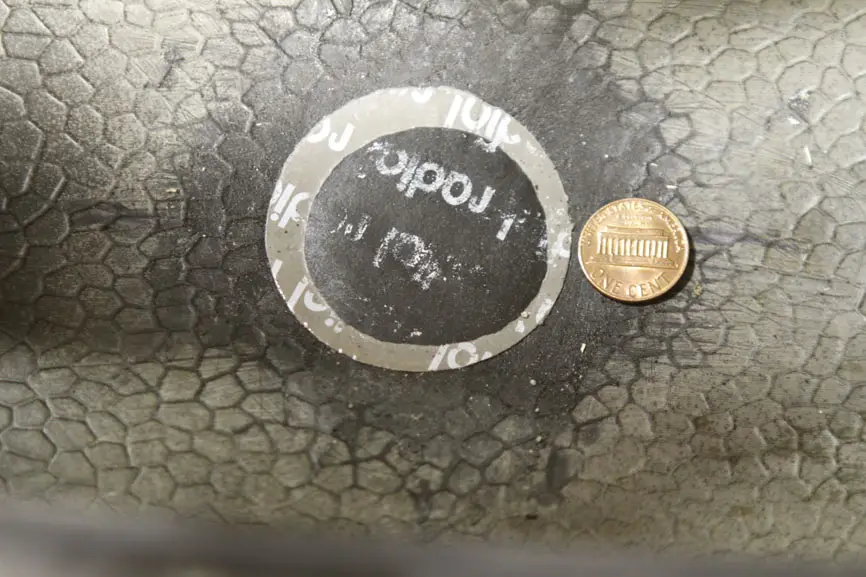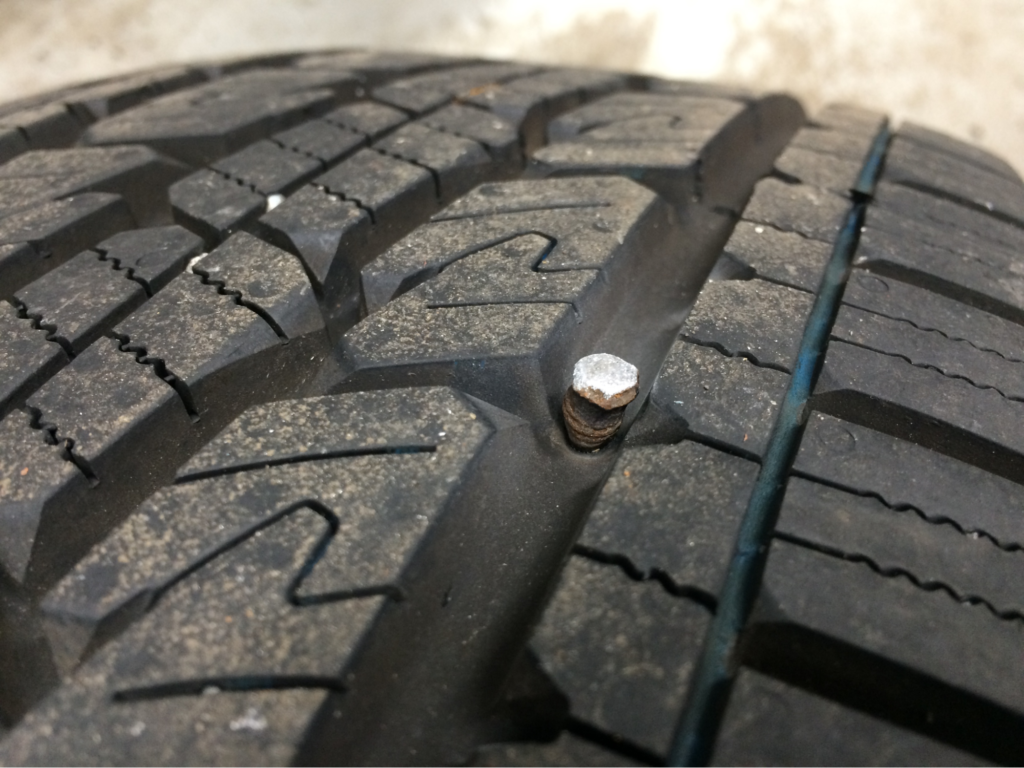So, you patched your tire by yourself and suddenly find out that it is leaking air. Yes, and we understand what an inconvenience it is.
So, why is the patched tire losing air?
But a patched tire loses air either if it is a failed patch or if any outside debris can strike the patched area. In this case, make sure that the tire patching is done correctly, or look for a replacement.
Yes, patched tires losing air is a serious concern. You need to take action as soon as possible and get it fixed. To know the entire process of fixing, let’s get started.
Why Does a Patched Tire Lose Air?
Normally a patched tire starts losing air either because the patch was not done properly or if any outside debris has affected it. Let’s go through each of the reasons for patched tires losing air.
Failed Patch:
Improper application or placement of tire patches, particularly when they are positioned too close to the tire’s sidewall, can result in air leaks. Insufficient cleaning of the puncture area prior to patch application or weak adhesive can also contribute to this issue. If a patch is not evenly attached to the tire or not properly centered over the hole, it is more prone to detachment.

Furthermore, patches may fail if the hole is too large. In such cases, the patch lacks the ability to effectively retain air within the tire, leading to eventual detachment. It is important to note that tire patches are designed for small holes or punctures and should not be considered a permanent solution for larger holes.
Outside debris:
Any type of debris can cause a puncture in the tire. Whether there is a bolt in the tire or a small pebble, tires are vulnerable to blowing out. It does not matter if the tire is patched, any type of debris can make it lose air again.

So, make sure to check the tire. Look for any sign of wear and tire. Even wire sticking out of the tire is not a good sign.
Should You Be Concerned if the Patched Tire is Losing Air?
Yes, you should be concerned if the patched tire is losing air. If the slow leak of pressure is about 4 psi then this is a big concern. You must fix it as soon as possible!
Because driving on a low-pressure tire generates excess heat and which leads to premature tire failure which can compromise safety. Get the tire fixed correctly and inflate the tires based on the manufacturer’s recommendations.
How to Fix Patched Tire Losing Air?
You can fix it if the patched tire is losing air. There is the plug and patch method. But if this fix does not work then it is better to just replace the tire.
Plug and Patch:
Plug and patch is a method where it combines features of both the plug and patch method. Following are the methods of performing the plug and patch fix on leaking patched tires.
Step 1: Verify the damaged area of the tire and then mark it, both on the inside and outside.
Step 2: Remove the screw or nail using the appropriate tools.
Step 3: Then clean the wound area using a tungsten carbide bit to ensure a clean and smooth hole.
Step 4: Prepare the inside of the tire by applying liquid tire buffer to remove residue. Use this tire buffer with appropriate grit to smooth out the surface. Make sure to hold it at an angle using the edge.
Step 5: Vacuum cleans the tire to remove any rubber shavings or fillings. Then apply rubber cement to the buffed area, covering an area larger than the patch.
Step 6: Let the rubber cement dry out for a few minutes. Next, apply the rubber cement to the patch and avoid touching the adhesive side.
Step 7: Then insert the patch through the hole using a needle, and guide it until it is seated against the tire.
Step 8: Pull the patch using pliers and stitch it in place using the stitching tool.
Step 9: Remove the plastic cover from the patch and then apply rubber cement to the edges of the patch.
Step 10: Trim off the excess plug using diagonal cutters. Ensure that the patch is flush with the tire tread surface.
Check this video for visual guidance Tire Patch-Plug Repair.
Now, don’t worry. Just start driving again. As you drive, the patch gets worn down and becomes hard to notice.
Replace the Tire:
If the plug and patch method does not work, then just replace the tire. If you are comfortable with DIY work, it will be an easy process.
Just grab the required tools. Lift the vehicle up, and remove the lug nuts. Then pull out the tire and mount the new tire. Screw back the lug nut in. Lower the vehicle down and check the tire pressure.
Can I Patch the Same Tire Twice?
Yes, you can patch the exact tire twice. But it depends on several factors. Patching a tire twice can be considered safe as long as the punctures are smaller than ¼ inch in diameter, at least 16 inches apart, and not located near the tire’s shoulder or sidewall.
However, it is generally not recommended to patch the same tire puncture more than twice. It is important to understand that each patch creates an additional potential weak point where air pressure may escape or debris could penetrate.
The process of patching a tire involves removing some of its internal structure, which can weaken the tire if performed excessively.
Consequently, patching a tire multiple times, especially in the same area, can compromise its strength, making it more vulnerable to further damage or potential blowouts.
Frequently Asked Questions (FAQs):
Will the Tire Shop Fix the Leaking Patch?
No, very few tire shops will fix the leaking patch. This is especially if the repair work has been done manually before. The patched tire leaking again means that the previous repair was not done properly. So, tire shops will try to avoid fixing such tires to avoid putting their name on the fixing. It also makes no financial sense.
How Long Does a Patched Tire Last?
When a tire is patched and repaired following standard procedures, it can generally last for an average of 7-10 years. However, it’s crucial to consider that the lifespan of a patched tire may vary based on the specific patching method employed. Therefore, regular monitoring and maintenance are essential to ensure the continued integrity and safety of the patched tire.
Should I Check the Wheel Alignment if My Patched Tire Continues to Lose Air?
No, it is not necessary to check the wheel alignment if the patched tire continues to lose air. If the repaired tire is losing air it is mainly due to poor quality patches or punctures. Mostly poor alignment is not responsible for patched tires to lose air. However, if you want to be extra sure, checking the wheel alignment is always a good idea.
Conclusion
In conclusion, a patched tire losing air can be a frustrating and potentially dangerous issue. While patching is a common solution for tire punctures, it is important to monitor the tire’s air pressure and address any ongoing leaks promptly.
If you notice a persistent loss of air, consult a professional to assess the patch and determine if a new repair or replacement is necessary to ensure optimal safety on the road.

